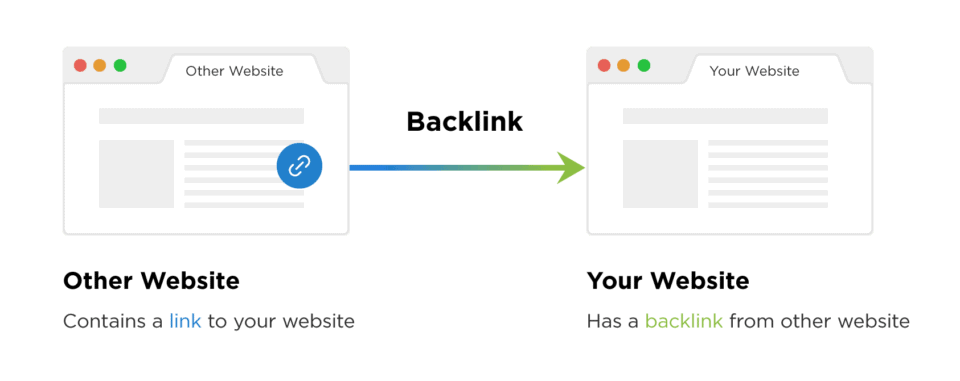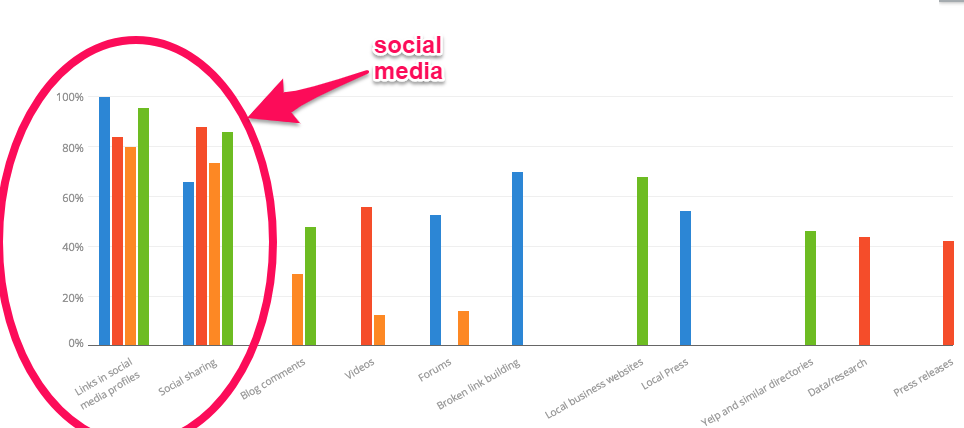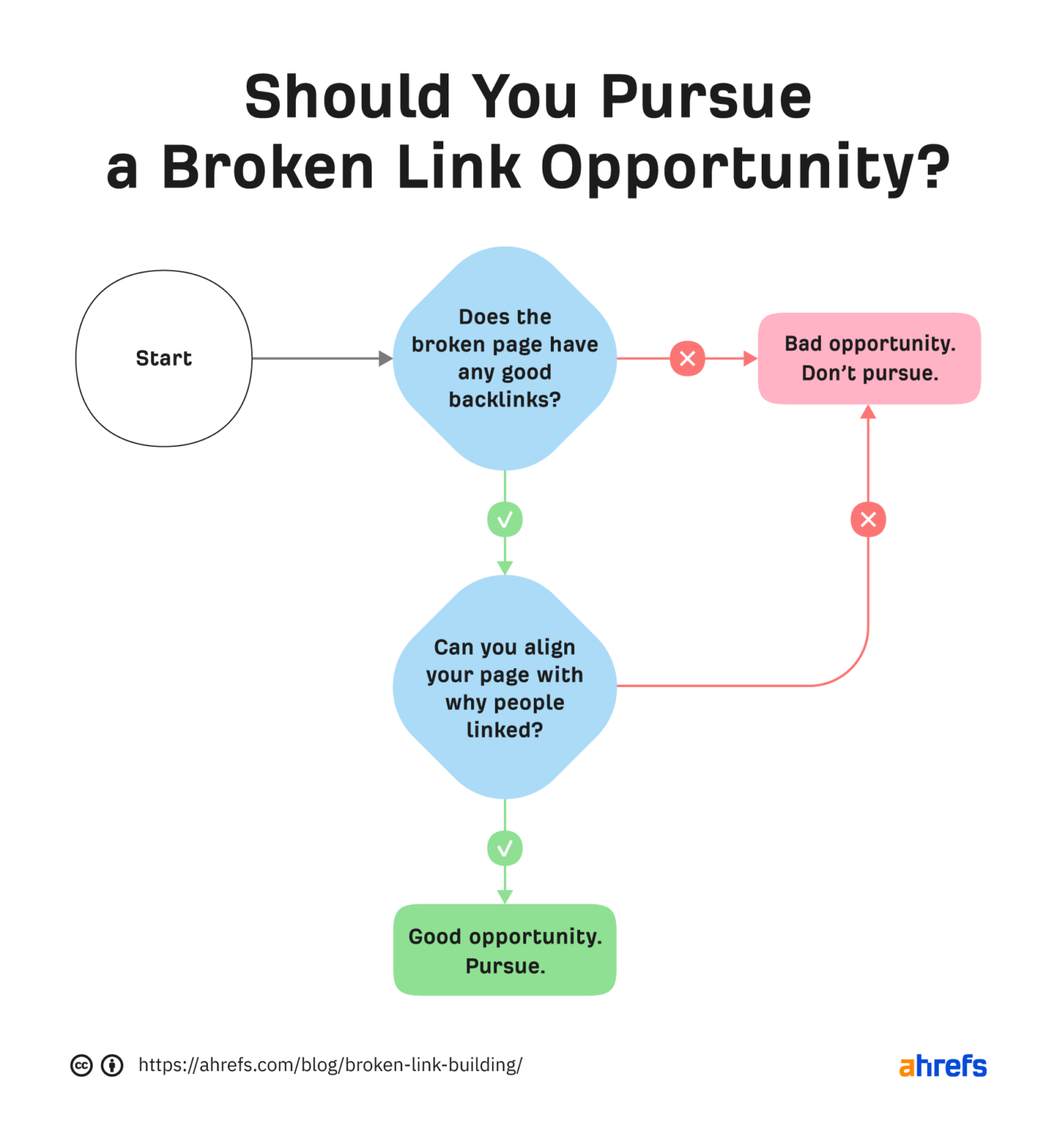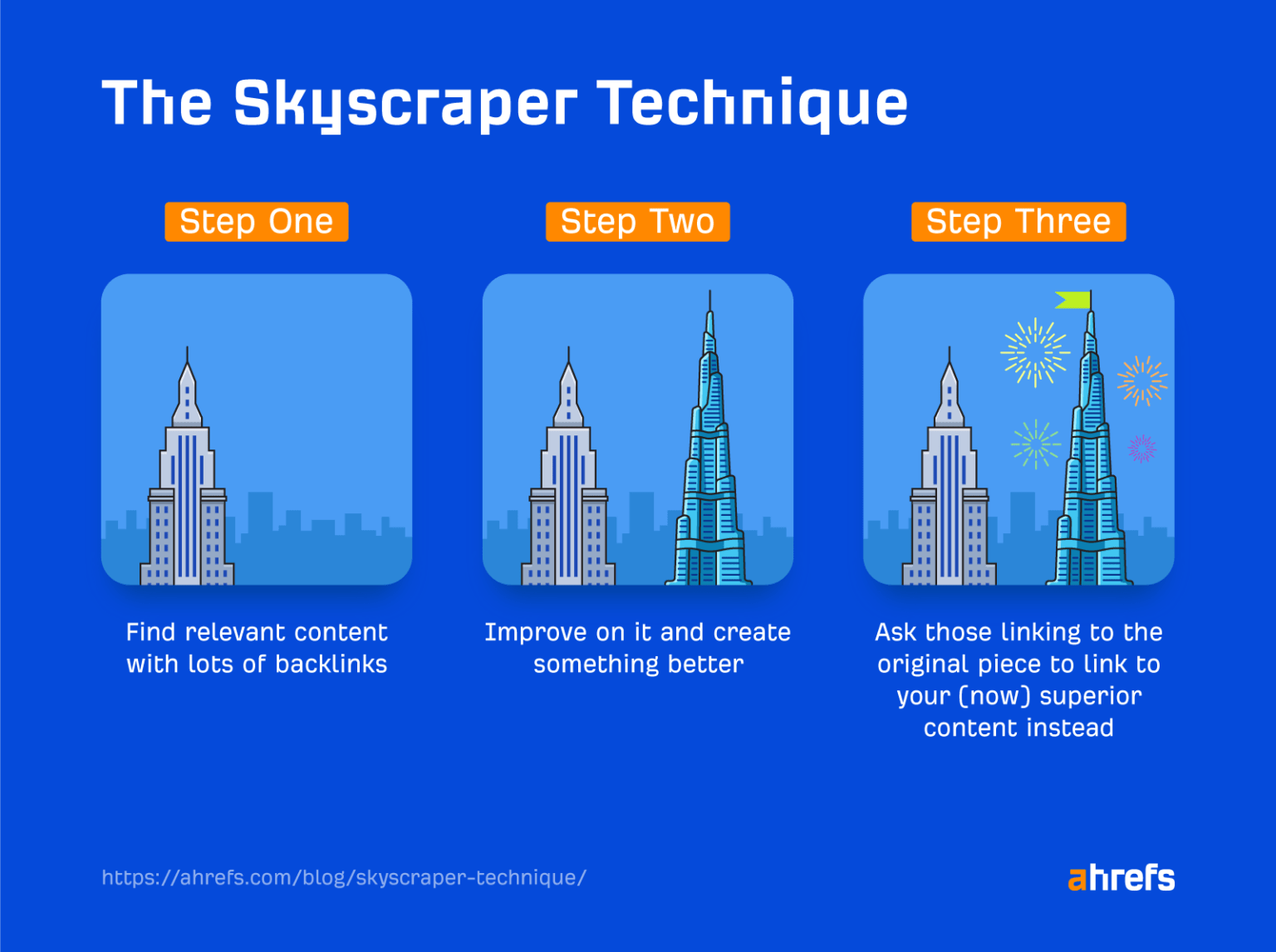
A strategic linking approach not only builds trust but also boosts traffic and enhances user engagement—a cherished goal for business owners. Yet, the debate lingers in the SEO arena—quantity versus quality. Some argue that the sheer number of links is the ultimate goal, a testament to a website’s popularity.
On the flip side, staunch advocates for quality contend that it’s not about any link but the right links, preferably from the big players in the online domain. Navigating this requires a nuanced approach, understanding the pros and cons of each school of thought. Below, we unravel the intricacies of backlinks and SEO, providing insights to tackle the pivotal question—how many backlinks should a website have to rank?
What are Backlinks & Its Types
A backlink is a link from one website to another. Think of it as a digital endorsement—a vote of confidence from one site to another. 
The above image showcases what a backlink is. The other website will have a link to your web page or website. At the same time, your website will consist of backlinks from another website. Determining how backlinks affect search engine ranking needs a detailed understanding of the several types of backlinks. Let’s have a look at the various categories:
- Natural Backlinks: These are links that appear of their own volition when other websites recognize the value of your content and link to it. Natural backlinks are ideal since they demonstrate trustworthiness and genuine interest.
- Manual or Outreach Backlinks: Manual or outreach backlinks are those that have been actively requested from other websites, bloggers, influencers, or business professionals. Although they provide control, the skill of persuasion is the key to their success.
- Self-Created Backlinks: These are connections that people develop independently, frequently in user profiles, comments, or online forums. Although they appear to be a simple technique to create links, search engines are becoming more adept at determining their worth.
Quality vs. Quantity
The quality vs. quantity argument is a recurring topic in the SEO community. Does having more backlinks result in greater rankings, or does link quality matter more?
- Quality Matters: Search engines, particularly Google, give quality precedence over quantity. A few trustworthy sites linking to your website with high-quality, authoritative backlinks can significantly improve your score. Focus on links from reputable sites that are pertinent to your niche.
- Avoiding Link Farms: Quantity without quality can create problems, particularly if the connections originate from link farms—websites created specifically to generate links. Search engines penalize such tactics, highlighting the value of a genuine and organic link profile.
- Diversity in Link Sources: It’s essential to have a broad backlink profile with a range of link sources and link types. Aim for a natural and diverse link profile that reflects the sincere support and interest that many internet entities have shown for your work.
How Many Backlinks Does It Take to Build Your DA?
The quest for an optimal number of backlinks to boost Domain Authority (DA) is a nuanced pursuit in the SEO landscape. Moz’s DA, a revered metric, operates on a 0 to 100 scale, where a DA of 60 or higher is generally considered good.
The real essence lies not just in numbers but in the quality of the obtained backlinks. The journey from 0 to 60 on the DA scale requires a strategic accumulation of backlinks from high-quality websites. For instance, a single backlink from a reputable research-oriented platform can wield more influence than numerous links from less authoritative sources.
While the importance of quality is paramount, the timeframe and effort required to rely solely on premium links to elevate DA can be substantial. A balanced approach emerges as the key plan of action. Smaller brand mentions can be added to the plan as a wise addition, providing a more varied backlink profile.
This sophisticated insight emphasizes the dynamic interaction between backlink quantity and quality. It focuses on how carefully combining targeted link acquisition with perseverance to navigate the always-changing online authority environment is necessary to develop a strong DA.
What’s a Safe Monthly Count for Backlink Acquisition?
A careful analysis is required to establish a safe monthly backlink acquisition count in order to preserve a natural and long-lasting link-building approach. Although there isn’t a universal solution, exercising caution is essential.
For a website to be competitive for SEO, it should have between 40 and 50 backlinks pointing to the homepage and between 0 and 100 backlinks pointing to each individual web page. Nonetheless, those backlinks’ page rank scores matter since the more valuable they are, the fewer connections are required to improve overall ranks. Obtaining the highest page rank backlinks is your best bet for long-term keyword competitiveness and higher ranks.
When it comes to backlinks, quality is always preferable than quantity. Finding a balance is essential to prevent search engine algorithms from seeing a rapid spike of backlinks as abnormal. The age of your website, industry standards, and the rate at which your rivals are constructing links are just a few of the variables that affect how safe your monthly backlink acquisition is.
Increasing backlinks gradually and steadily while taking into account the particular context of your website is usually a safer strategy. Adhering to industry standards and keeping a close eye on your website’s performance are essential components of a safe and successful backlink acquisition campaign.
The Role of Backlinks in SEO
In the intricate and dynamic realm of Search Engine Optimization (SEO), backlinks play a silent role yet have a big impact on a website’s ranking and visibility. You may be surprised to learn that the top-ranked website on Google has 3.8 times as many backlinks as the next ten websites. This section looks at the importance of backlinks for search engine optimization.
It examines how these online suggestions are interpreted by search engines. The Dynamics of Link Diversity and Relevance 
Although the sheer number of backlinks is crucial, the dynamics of variety and relevancy also significantly increase their power in SEO.
- Diverse Link Sources: Search engines prefer a varied backlink profile that includes a range of sources and link types. This variety denotes a wide acceptance of a website’s worth from several facets of the online ecosystem.
- Natural Link Growth: The growth of links naturally and organically is essential. Search engines are skilled at distinguishing between real, earned connections and tricks. A website’s SEO strategy gains credibility when backlinks are gradually and legitimately accumulated over time.
- The Evolving Landscape: Search engine algorithms are always changing to put the user experience first and thwart manipulative techniques. For long-term SEO success, it is crucial to be aware of these developments and modify link-building tactics accordingly.
Common Misconceptions About Backlinks
Even seasoned SEO aficionados might be misled by the myths and fallacies that abound while navigating the backlink environment. Let’s dispel a few of these common misconceptions.
- Quantity Trumps Quality: The idea that more backlinks inevitably result in higher rankings is among the most widespread fallacies. In truth, quality is king, and a select few excellent backlinks can outperform many subpar ones.
- All Links Are Equal: Backlinks are not created equally. Search engines take the connecting site’s authority and relevancy into account. A link from an authoritative industry website carries more weight than numerous links from less reputable sources.
- Reciprocal Links Are Harmful: While an excess of reciprocal links with the sole intent of manipulating rankings is frowned upon, natural reciprocal links between relevant, high-quality sites can be beneficial. It’s about the intent and context behind the link exchange. According to Ahrefs, reciprocal links are present in 43.7% of the top-ranking websites.
Determining the Right Number of Backlinks
The pursuit of the perfect amount of backlinks necessitates establishing a delicate balance that is impacted by a variety of factors, guided by analytics, and motivated by attainable objectives. In this investigation, we dissect how to choose the ideal quantity of backlinks for optimum SEO performance.
Factors Influencing the Ideal Backlink Count
The optimal backlink count for a website is influenced by a number of variables, which shapes a complex approach to successful SEO tactics. Consider the following important factors:
- Domain Authority: The overall authority and trustworthiness of a website are crucial. A high-quality backlink profile from a reliable website is more advantageous to SEO than an excess of bad-quality backlinks.
- Relevance of Links: It’s imperative that backlinks connect to the main idea and content of the website. Search engine algorithms give greater weight to links originating from websites within the same business or niche.
- Link Diversity: Search engines favor a more natural-looking backlink profile that has a variety of links (from directories, social media, and guest posts, for instance).
- Organic Growth Over Time: Ideally, backlinks should build up gradually and naturally over time. The quick acquisition of a lot of links might be problematic and harmful to SEO.
- Link Quality: When it comes to backlinks, quality is more important than quantity. Reputable, high-quality websites’ links have a greater influence on search engine optimization and online exposure.
- User-Centric Experience: Links pointing users in the direction of useful and pertinent content improve user experience. SEO is improved by optimizing links in a user-centric manner.
Building a Strong Backlink Profile This section will delve into the ways to build a robust backlink profile to enhance your website SEO.
Skyscraper Technique
According to Brian Dean, the skyscraper approach comprises creating knowledge superior to existing sources in terms of quality, depth, and relevance. After creating excellent content, visit websites with few in-depth resources and propose your content as a viable replacement.
This tactic enhances the possibility that other websites will replace their present links with yours by providing additional value. Your website is viewed as a reliable resource in your niche, and your backlink profile is improved.
Social Media
Social media plays a vital function in social interaction, but it is also a dynamic platform for backlink creation. Sharing your content on numerous social media platforms makes it more visible and improves the chance other people will connect.
Additionally, by interacting with your audience on social media, you can get natural backlinks as people share and suggest your content to their contacts. The mutually beneficial relationship between backlink building and social media presence shows how linked digital tactics are. 
A strong dependence on social media tactics was disclosed by most SEO professionals who responded to a survey asking about their favorite link-building strategies.
Broken Link Building
Broken links are unavoidable in the dynamic digital environment. The process of identifying broken links on trustworthy websites and contacting the website owner to provide your relevant content as a substitute is referred to as broken link building.
This allows you to obtain a worthwhile backlink while assisting the connecting website in maintaining a great user experience. It is crucial to offer users content that supports their needs and fits the current situation. Building broken links not only helps you obtain useful backlinks but it also improves the linked website’s user experience.
Offering helpful and pertinent content helps you get backlinks and positions your website as an authority in the digital sphere by establishing it as a valuable resource for your industry. 
The illustration above demonstrates determining whether a broken link is a business opportunity for you. Start by scanning the website for any high-quality backlinks. If it doesn’t consist of quality links, don’t waste your time on the page. The next stage, then, is to determine whether any strong links align with your theme and content. Make an effort to seize the chance if the response is positive.
Final Words: How Many Backlinks Are Enough?
In the end, there is no clear solution to this issue. More high-quality backlinks can undoubtedly help you, but if your content strategy isn’t improved and your user base isn’t considered, it won’t matter. Having 0 to 100 backlinks to each individual web page and 40 to 50 backlinks to the homepage is a safe bet for a website to be competitive for SEO.
There are, nonetheless, a number of other elements that must be taken into account. To increase the success of your online marketing approach, you must strike a balance. It’s crucial to use caution and refrain from obtaining an excessive number of backlinks from low-quality websites at the same time.
It all comes down to experimentation in the end. Eventually, you’ll figure out what works best for your website and business, refine your efforts, and produce a priceless resource that others can benefit from.

